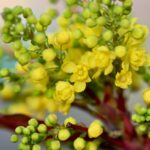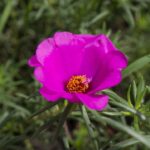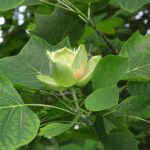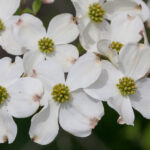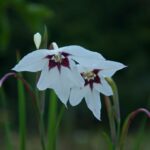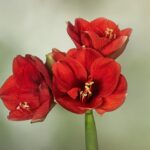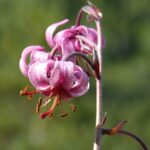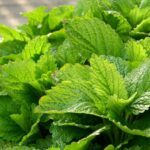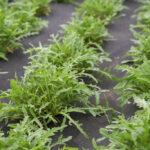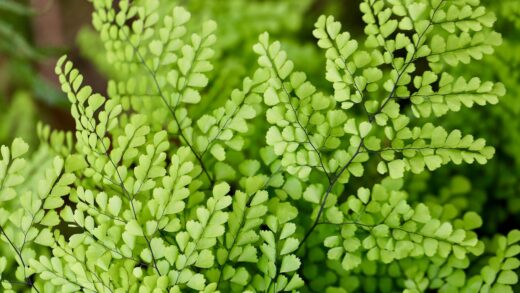Light requirements of angel’s trumpet
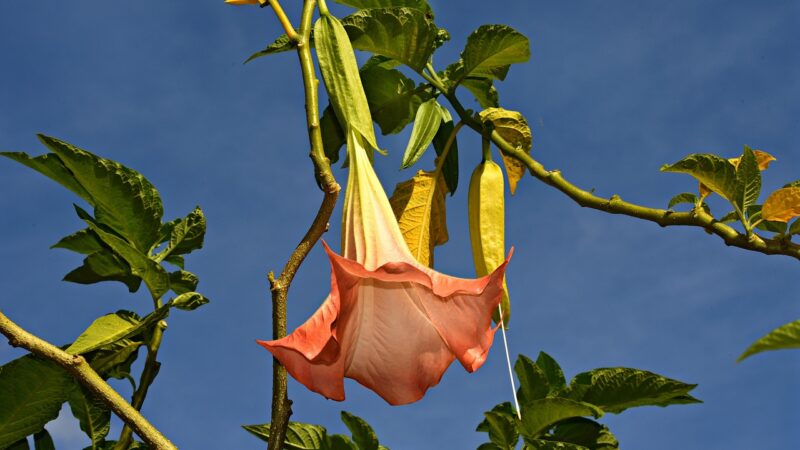
Understanding and providing the appropriate amount of light is a cornerstone of successful Brugmansia cultivation. As plants originating from the equatorial regions of South America, they are adapted to a high-light environment, and this resource is the primary fuel for their vigorous growth and prolific flowering. However, their light needs are more nuanced than simply placing them in the brightest, sunniest spot available. The intensity of the sun, the duration of exposure, and the ambient temperature all play interconnected roles in determining the ideal lighting conditions. Striking the perfect balance between providing enough energy for photosynthesis while preventing the stress caused by excessive heat and solar radiation is the key to unlocking the full potential of these stunning ornamental plants. A well-sited angel’s trumpet will reward the gardener with lush, deep green foliage and a continuous cascade of fragrant, trumpet-shaped blooms.
The general rule for Brugmansia is that they require at least six to eight hours of direct sunlight per day to thrive and flower well. This substantial amount of light energy is necessary to power the photosynthetic processes that create the sugars needed for their rapid growth and the development of their large, energy-intensive flowers. In climates with moderate summers, a location in full sun for the entire day can be tolerated and may even be ideal. However, in regions with very hot and intense summer sun, this constant exposure can be detrimental, leading to problems like leaf scorch and heat stress.
The concept of ‘morning sun and afternoon shade’ is the most widely recommended lighting strategy for Brugmansia, especially in warmer climates. Providing direct sun during the cooler morning hours allows the plant to perform the bulk of its photosynthesis before the peak heat of the day. Then, as the sun reaches its most intense angle in the afternoon, some form of shade—whether from a building, a high-canopied tree, or a shade cloth—protects the plant’s large, tender leaves from burning and reduces the rate of water loss through transpiration. This strategy provides the best of both worlds: ample light for energy production and protection from damaging environmental stress.
Ultimately, the plant itself is the best indicator of whether its light conditions are appropriate. A plant receiving adequate light will have a compact growth habit, sturdy stems, large, dark green leaves, and will produce an abundance of flowers. Conversely, a plant that is not receiving enough light will often become ‘leggy’, with long, thin stems and sparse foliage as it stretches towards the available light source, and its flowering will be significantly reduced or absent. By learning to read these cues, a gardener can fine-tune the plant’s location to provide the perfect lighting for a spectacular display.
The ideal balance of sun and shade
Achieving the perfect balance of sun and shade is crucial for maximizing the health and flowering of a Brugmansia. The ideal scenario provides the plant with sufficient light for robust growth while shielding it from the most damaging rays of the sun. For most growing zones, this translates to a location that receives full, direct sun for the first half of the day, from sunrise until early afternoon. This morning sun is less intense than afternoon sun, allowing the plant to absorb light energy efficiently without overheating. This period of direct light is vital for building up the energy reserves needed for prolific blooming.
More articles on this topic
As the day progresses and the sun becomes more intense, particularly from noon to late afternoon, some form of protection becomes highly beneficial. This does not necessarily mean deep, dark shade, but rather filtered or dappled light. This can be naturally provided by the high canopy of a deciduous tree, which allows pockets of light to filter through while blocking the harshest direct rays. Alternatively, strategic placement on the east or northeast side of a house or other structure can ensure the building itself casts a protective shadow during the hottest part of the day. This afternoon respite helps prevent the leaves from wilting and scorching and reduces the overall water demand of the plant.
The specific balance of sun and shade will vary depending on the geographical location and climate. In cooler, northern climates with less intense summer sun, a Brugmansia may be perfectly happy in full sun all day long. In fact, in such regions, providing as much sun as possible might be necessary to ensure adequate flowering. Conversely, in hot, arid, or southern climates, providing afternoon shade is not just an option but a necessity for the plant’s survival. In these intense environments, the afternoon sun can be so strong that it damages the plant’s tissues, leading to permanent leaf burn and severe stress.
For plants grown in containers, achieving this balance is significantly easier, as they can be moved. A potted Brugmansia can be positioned in a sunny spot in the spring and autumn when the sun is weaker, and then relocated to a more protected, partially shaded location during the peak of summer. This mobility allows the gardener to adapt to the changing seasons and provide the plant with optimal light conditions throughout its entire growing period. This level of control is one of the primary advantages of cultivating these magnificent plants in large pots or tubs.
Recognizing signs of incorrect light exposure
The foliage of a Brugmansia provides clear and immediate feedback about the adequacy of its light conditions. One of the most common signs of excessive light exposure is leaf scorch. This manifests as brown, dry, and crispy patches on the leaves, particularly at the tips and outer margins. In severe cases, large sections of the leaf may turn yellow or white and feel papery to the touch. This occurs when the intensity of the sun literally burns the leaf tissue. Another sign of too much sun is persistent wilting, where the leaves droop dramatically during the day, even when the soil is moist, indicating that the plant is losing water through transpiration faster than its roots can absorb it.
More articles on this topic
Conversely, a Brugmansia that is not receiving enough light will also exhibit distinct symptoms. The most obvious sign is etiolation, or ‘legginess’. The plant will develop unusually long, thin stems with large gaps between the leaves as it physically stretches in search of a brighter light source. The leaves themselves may be larger than normal but will often be a paler shade of green and may feel thinner and floppier. The overall appearance will be sparse and weak rather than full and robust.
The most significant consequence of insufficient light is a dramatic reduction in flowering. Brugmansia are light-demanding plants, and they require a significant amount of solar energy to initiate bud formation and produce their large, complex flowers. A plant situated in a location that is too shady may produce lush green foliage but will yield very few, if any, blooms. If a healthy, well-fed plant is failing to flower, inadequate sunlight is one of the first factors that should be assessed and corrected. Moving the plant to a location with more direct sun, particularly in the morning, can often trigger a new flush of blooms.
It is also important to consider the acclimatization of the plant to its light conditions. A plant that has been overwintered indoors or grown in a shaded nursery will be highly susceptible to sunburn if it is suddenly moved into direct, full sun. The leaves need time to adapt to the higher light intensity. This is achieved through a process of ‘hardening off’, where the plant is gradually exposed to increasing amounts of direct sun over a period of one to two weeks. This allows the plant to thicken the cuticle of its leaves and adjust its photosynthetic apparatus to prevent shock and damage.
Adjusting light conditions for climate and seasons
The optimal light exposure for a Brugmansia is not a static requirement but one that needs to be adjusted based on both the regional climate and the changing seasons. Gardeners in northern latitudes or coastal areas with cool, mild summers will likely need to provide their plants with as much direct sun as possible. In these regions, the sun’s angle is lower and its intensity is weaker, so a full-sun location for the entire day is often necessary to provide the energy required for a good flowering display. The risk of leaf scorch is minimal in these cooler climates.
In stark contrast, gardeners in continental climates with hot, dry summers or in subtropical and tropical regions must be much more strategic about providing shade. In these locations, the midday and afternoon sun can be incredibly intense and damaging. The ‘morning sun, afternoon shade’ rule becomes a critical mandate for success. In the most extreme climates, such as desert regions, Brugmansia might need to be grown in bright, dappled shade for most of the day, receiving only a few hours of the very early morning sun. The priority in these climates shifts from maximizing light to preventing heat stress and dehydration.
The seasonal progression of the sun also requires adjustments. In the spring and autumn, when the sun is at a lower angle in the sky and temperatures are cooler, a position in full sun is generally beneficial for all climates. This allows the plant to capitalize on the available light to either kick-start its spring growth or to build up energy reserves before winter dormancy. As summer approaches and the sun gets higher and more intense, the plant, especially if it is in a container, may need to be moved to a more protected location to avoid the peak solar radiation of the summer solstice period.
Artificial shading can be a useful tool for gardeners who have a sunny location that becomes too intense in mid-summer. A simple shade cloth, available in various densities, can be erected over the plant to filter the sunlight and reduce its intensity. This can be a practical solution for plants grown in the ground that cannot be moved. By understanding the interplay between light intensity, duration, and temperature, and by making thoughtful adjustments based on climate and season, a gardener can create the perfect light environment to keep their angel’s trumpet healthy and blooming beautifully.

